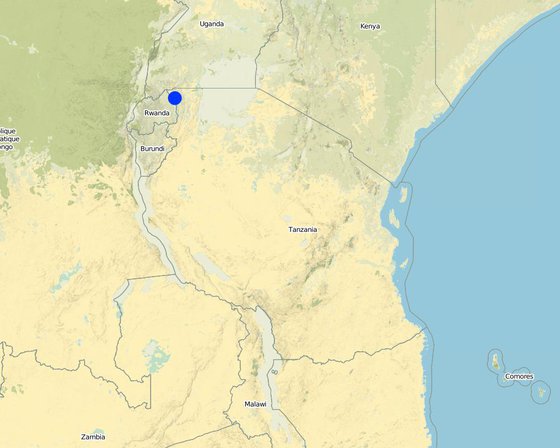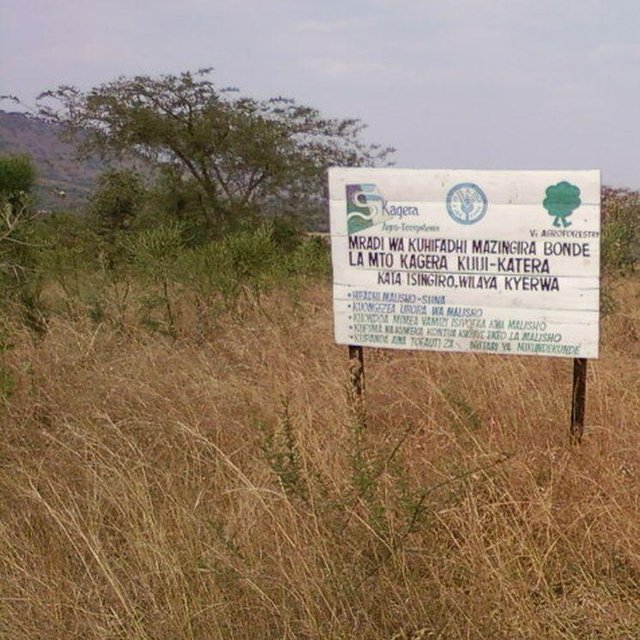

The grazing land enclosure combined with quality pastures’ reseeding is the identification and demarcation of the degraded grazing land, reseeding palatable grass species and legumes with application of rotational grazing system. The technology is applied on the grazing land in the tropics, sub humid, gentle undulating upland, seasonal swamps to ensure SaLM with increased quantity and quality of pasture production. The land cultivation is done manually using hand hoes, in the mixed production system. The land ownership is communal and the land use right is organized (grazing land is demarcated) for all livestock keepers to graze their livestock. The establishment procedures includes planting of Euphobia spps along the borders, reseeding palatable grasses spps on the bare spots, plough and drill legume seeds intergraded with grasses. The maintenance procedures require range patrol, paddocks (fences and roads) maintenance. The average cost to establish one hector of the technology is US$ 122.11 while the maintenance of one hector is US$ 41.72 the technology was introduced by Kagera TAMP in 2012 using FFS methodology. Hay making is considered to be supportive technology that can add effectiveness to the main technology.
Purpose of the Technology: The major purpose is to restore soil vegetative cover, increase biomass, increase soil nutrient cycling, reduce soil moisture stress and diversify pasture species, for recommended carrying capacity attainments.
Establishment / maintenance activities and inputs: The establishment activities include; first identification and demarcation of degraded grazing land done in June. Second is broadcasting improved pasture seeds (Chloris gayana and Congo signal) done in late August. Third is establishment of live fence (planting Euphobia spps, sisal seedling and mikwatango) done in September. Fourth is cultivation of bare land spots and drill legume seeds (Stylosthensis hamata, centocema pubences etc) or plant improved legume cuttings (Desmodium coloratum). The maintenance activities includes; first weeding invasive species (sida accuta, Duratura stromonium etc) done manually using hand hoes and machete in June and January. Second is fire break cleaning done manually using hand hoes in May and December. Last but not least to importance is range patrol done routinely.
Natural / human environment: The human environments includes wealthy stutus as 13% poor land user, 50% average land users and 37% rich land users owning the land ownership is communal. The land cultivation is done manually using hand hoes. The production system is mixed in the sense that, live cull cows and steers are for sale while small ruminants and milk are for both domestic consumption and sales of excess.

地点: Kyerwa, Tanzania, 坦桑尼亚联合共和国
分析的技术场所数量:
技术传播: 均匀地分布在一个区域 (approx. < 0.1 平方千米(10 公顷))
在永久保护区?:
实施日期: 不到10年前(最近)
介绍类型






| 对投入进行具体说明 | 单位 | 数量 | 单位成本 (Tshs) | 每项投入的总成本 (Tshs) | 土地使用者承担的成本% |
| 劳动力 | |||||
| Labour | ha | 1.0 | 13.8 | 13.8 | |
| 植物材料 | |||||
| Seeds | ha | 1.0 | 119.02 | 119.02 | |
| Seedlings | ha | 1.0 | 3.09 | 3.09 | |
| 技术建立所需总成本 | 135.91 | ||||
| 技术建立总成本,美元 | 0.08 | ||||
| 对投入进行具体说明 | 单位 | 数量 | 单位成本 (Tshs) | 每项投入的总成本 (Tshs) | 土地使用者承担的成本% |
| 劳动力 | |||||
| Labour | ha | 1.0 | 41.73 | 41.73 | 100.0 |
| 技术维护所需总成本 | 41.73 | ||||
| 技术维护总成本,美元 | 0.02 | ||||
SLM之前的数量: 1
SLM之后的数量: 1.5
DM yield improved after reducing trampling and bushfires.
SLM之前的数量: 3
SLM之后的数量: 17
Legumes intercroping had fixed nitogen in the soil.
SLM之前的数量: 50
SLM之后的数量: 170
liveweight gain per anum improved due to optimum DM -intake and DCP availability. .
cost of desmodium, stylothensis hamata and Nappier grass
labour demanded for extra activities.
SLM之前的数量: 0
SLM之后的数量: 3
group members can organize themselves to conserve the rest of the overgrazed area
SLM之前的数量: low
SLM之后的数量: moderate
a training site shown positve results after six months of implimentation.
FFF group members includes all genders.
The effective duration of technology implimentation is too short to meet technology upscaling to suit the farming scale (medium scale ie. 100-300 cattle) herd size.
grasses impends water run -off
grasses covered soil surfaces
SLM之前的数量: 50
SLM之后的数量: 90
no bare spot found in the field.
cattle restrivted to tramp the soils.
planted desmodium and stylothensis hamata
mixture of grasses and legumes.
snakes and rodents are hinding in tall grasses.
firebreak constructed along the borders.